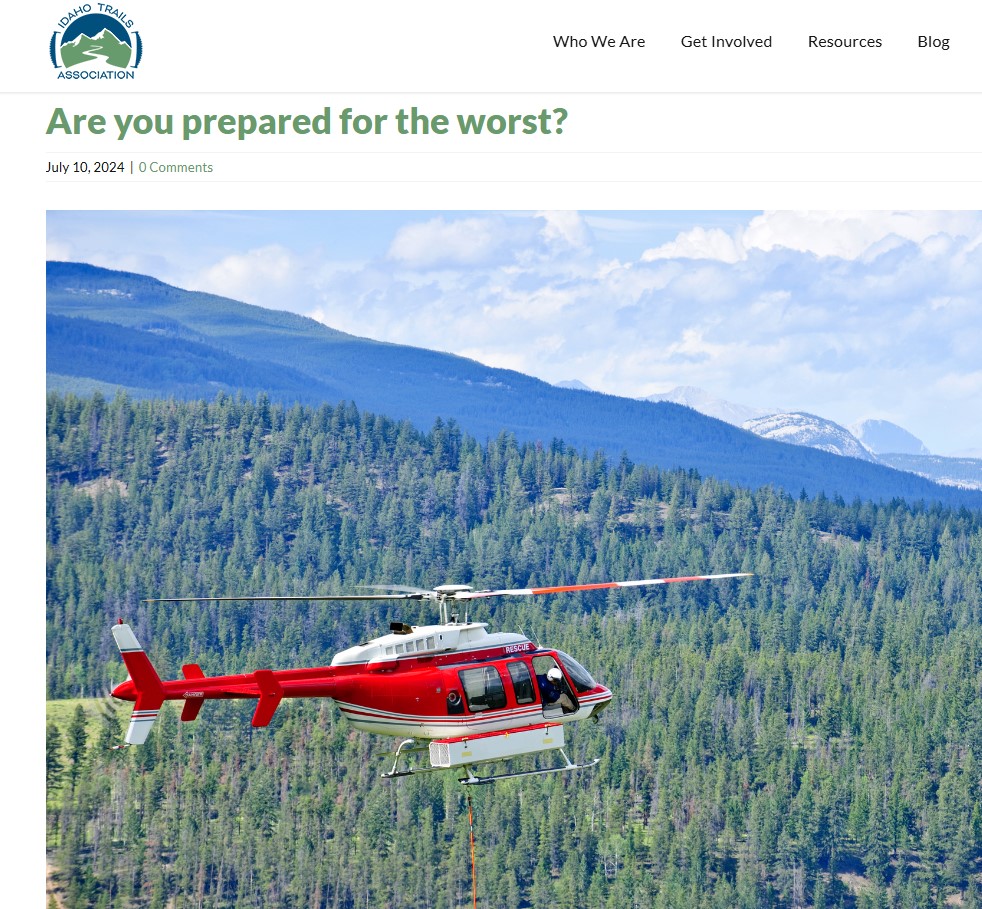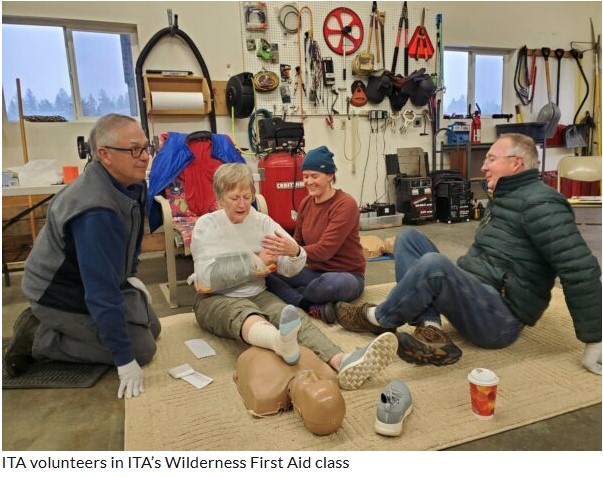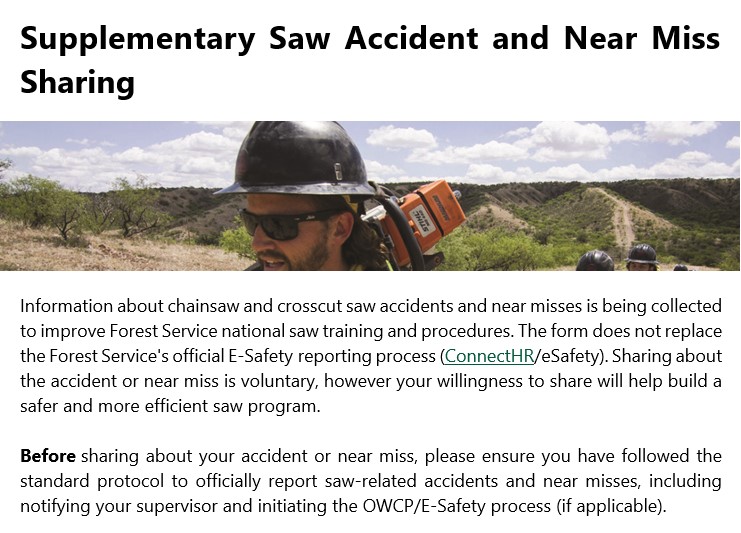 By Melanie Vining, ITA Executive Director
By Melanie Vining, ITA Executive Director
I wouldn’t put myself in the “wing it” category, but if there is spectrum I’d not be at the “well-prepared” end either. Maybe somewhere in the middle. I’ve taken off on ten-mile day hikes with running shoes and a peanut butter sandwich, but I’ve also done weeklong backpacking trips and checked all the boxes: proper food, first aid kit, clothing for bad weather, etc. I’m…semi-prepared. But a recent event has underscored, for me, the importance of planning for the worst.
If you read my last blog post, you know I was injured in a horseback riding accident in May. In this case, I was prepared: I went for a short ride from my house, alone, but made sure I had my phone in my pocket and not in my saddle bag so in the off chance I should end up on the ground (where are these odds when I play the lotto?!), I’d have communication. In this case, a phone= preparedness. I was riding a good horse, one that had done hundreds of miles on trails and leading pack strings with me the summer before. I was leading a mule that had gone on most of those trips. Our skill set matched our journey. But, as they say, stuff happens.
So back to preparedness. People approach this topic differently, but I’ve had a lot of time to think about it in the last month (a LOT), and I feel like there is a “recipe” for being prepared for an outdoor adventure.
adventure.
- The first ingredient is sort of internal: fitness level and skill set. If you are embarking on a hike or other adventure more challenging or complex than you’ve attempted before, preparedness might look like training hikes and practicing certain skills ahead of time. Never tested the water filter? Maybe try that sucker out before it clogs, you don’t know how to troubleshoot, and you find yourself staring at a stagnant pond, choosing between imminent gastrointestinal malady or being really freaking thirsty.
- The second ingredient is gear: are you out for a few hours? A day? Weeks? What could you possibly encounter in that time? Weather, physical obstacles, wildlife…a list helps. Maybe bear spray isn’t important hiking in the Boise Foothills for the afternoon, but for the same 3-mile hike in the Selkirk Mountains, it’s essential. The three-season tent is dead weight on a July Priest River hike but it’s a life saver on an October trek in the high Sawtooths.
- Next in the recipe: communication. Does someone know where you’re going and plan to return? Do you have a way to call for help should you need it? Back to my horse wreck. I was ¼ mile from my house and less than that from our neighbors, but in a field that was totally out of sight from both. I hadn’t told anyone where I was going, since it was “just out the back door” and my husband and kids were at work and school. Had I not had my phone, I would have been stuck, surrounded by my unconcerned and equally invisible animals, for several hours before anyone missed me. But I’d planned ahead enough so I was able to call for help right away. Bring the phone where it works, invest in the satellite communication device. You can still “unplug” and not text for fun, but it could literally save your life. Tell someone where you’re going, too. Give them a map if they aren’t familiar with the area you’ll be in. Technology can fail, and a human back up plan is essential.
- Maybe most important is medical. Ideally, everyone should have basic first aid training and a basic first aid kit in their pack, vehicle, saddlebags, always. There are many resources for training and information; take advantage of them (or become an ITA crew leader and get Wilderness First Aid Training for free!). Sadly, there are injuries the best of the backpack first aid kits and even surgeon-level education and training can’t fix on the trail. Enter Life Flight membership. Last I checked (five minutes ago), the membership was 85.00/year. Average Life Flight bill: I’ve not done that math but our son’s bill- had we not had Life Flight coverage- when he was injured 6 years ago and flew from the Arco area to Twin Falls was over 25,000 dollars. I’m still awaiting my bill, unexcitedly, because even if you’re covered, seeing five figures on a paper that says BILL at the top makes the heart pound. And this is all before the patient enters the hospital for treatment. Certainly worth the membership, especially for us outdoor adventurers. You don’t need it til you…need it. Our family has flown this way more than we’d like, and we aren’t exactly kamikazes in the woods. Note: some insurance plans cover Life Flight- my husband’s does-so check yours as it may, and you can skip the membership.
- Last, and maybe this goes without saying for the active choir I’m preaching to but stay fit! I can’t count how many times everyone from my surgeon to nurses to physical therapists remarked that my good bone density (solid anchor for the screws and plates they had to “install”), and fitness would speed my recovery. My upper body strength has allowed me to get around on a walker vs a wheelchair, push myself up from chairs using only my good leg, and just be more self-sufficient in general (my husband still must put my socks on, sigh). The best way to be prepared for an injury we hope not to happen is to be as healthy and fit as possible.
- So, there it is. Risk management from my armchair here in rural Idaho. Plan, learn, practice, communicate. Get the 7.00/month Life Flight membership. But keep hiking and adventuring!




